Chrysler 2011 Annual Report Download - page 281
Download and view the complete annual report
Please find page 281 of the 2011 Chrysler annual report below. You can navigate through the pages in the report by either clicking on the pages listed below, or by using the keyword search tool below to find specific information within the annual report.-
 1
1 -
 2
2 -
 3
3 -
 4
4 -
 5
5 -
 6
6 -
 7
7 -
 8
8 -
 9
9 -
 10
10 -
 11
11 -
 12
12 -
 13
13 -
 14
14 -
 15
15 -
 16
16 -
 17
17 -
 18
18 -
 19
19 -
 20
20 -
 21
21 -
 22
22 -
 23
23 -
 24
24 -
 25
25 -
 26
26 -
 27
27 -
 28
28 -
 29
29 -
 30
30 -
 31
31 -
 32
32 -
 33
33 -
 34
34 -
 35
35 -
 36
36 -
 37
37 -
 38
38 -
 39
39 -
 40
40 -
 41
41 -
 42
42 -
 43
43 -
 44
44 -
 45
45 -
 46
46 -
 47
47 -
 48
48 -
 49
49 -
 50
50 -
 51
51 -
 52
52 -
 53
53 -
 54
54 -
 55
55 -
 56
56 -
 57
57 -
 58
58 -
 59
59 -
 60
60 -
 61
61 -
 62
62 -
 63
63 -
 64
64 -
 65
65 -
 66
66 -
 67
67 -
 68
68 -
 69
69 -
 70
70 -
 71
71 -
 72
72 -
 73
73 -
 74
74 -
 75
75 -
 76
76 -
 77
77 -
 78
78 -
 79
79 -
 80
80 -
 81
81 -
 82
82 -
 83
83 -
 84
84 -
 85
85 -
 86
86 -
 87
87 -
 88
88 -
 89
89 -
 90
90 -
 91
91 -
 92
92 -
 93
93 -
 94
94 -
 95
95 -
 96
96 -
 97
97 -
 98
98 -
 99
99 -
 100
100 -
 101
101 -
 102
102 -
 103
103 -
 104
104 -
 105
105 -
 106
106 -
 107
107 -
 108
108 -
 109
109 -
 110
110 -
 111
111 -
 112
112 -
 113
113 -
 114
114 -
 115
115 -
 116
116 -
 117
117 -
 118
118 -
 119
119 -
 120
120 -
 121
121 -
 122
122 -
 123
123 -
 124
124 -
 125
125 -
 126
126 -
 127
127 -
 128
128 -
 129
129 -
 130
130 -
 131
131 -
 132
132 -
 133
133 -
 134
134 -
 135
135 -
 136
136 -
 137
137 -
 138
138 -
 139
139 -
 140
140 -
 141
141 -
 142
142 -
 143
143 -
 144
144 -
 145
145 -
 146
146 -
 147
147 -
 148
148 -
 149
149 -
 150
150 -
 151
151 -
 152
152 -
 153
153 -
 154
154 -
 155
155 -
 156
156 -
 157
157 -
 158
158 -
 159
159 -
 160
160 -
 161
161 -
 162
162 -
 163
163 -
 164
164 -
 165
165 -
 166
166 -
 167
167 -
 168
168 -
 169
169 -
 170
170 -
 171
171 -
 172
172 -
 173
173 -
 174
174 -
 175
175 -
 176
176 -
 177
177 -
 178
178 -
 179
179 -
 180
180 -
 181
181 -
 182
182 -
 183
183 -
 184
184 -
 185
185 -
 186
186 -
 187
187 -
 188
188 -
 189
189 -
 190
190 -
 191
191 -
 192
192 -
 193
193 -
 194
194 -
 195
195 -
 196
196 -
 197
197 -
 198
198 -
 199
199 -
 200
200 -
 201
201 -
 202
202 -
 203
203 -
 204
204 -
 205
205 -
 206
206 -
 207
207 -
 208
208 -
 209
209 -
 210
210 -
 211
211 -
 212
212 -
 213
213 -
 214
214 -
 215
215 -
 216
216 -
 217
217 -
 218
218 -
 219
219 -
 220
220 -
 221
221 -
 222
222 -
 223
223 -
 224
224 -
 225
225 -
 226
226 -
 227
227 -
 228
228 -
 229
229 -
 230
230 -
 231
231 -
 232
232 -
 233
233 -
 234
234 -
 235
235 -
 236
236 -
 237
237 -
 238
238 -
 239
239 -
 240
240 -
 241
241 -
 242
242 -
 243
243 -
 244
244 -
 245
245 -
 246
246 -
 247
247 -
 248
248 -
 249
249 -
 250
250 -
 251
251 -
 252
252 -
 253
253 -
 254
254 -
 255
255 -
 256
256 -
 257
257 -
 258
258 -
 259
259 -
 260
260 -
 261
261 -
 262
262 -
 263
263 -
 264
264 -
 265
265 -
 266
266 -
 267
267 -
 268
268 -
 269
269 -
 270
270 -
 271
271 -
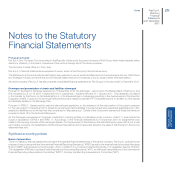 272
272 -
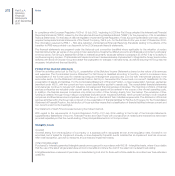 273
273 -
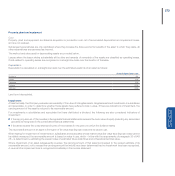 274
274 -
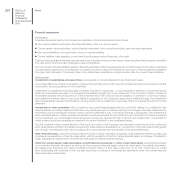 275
275 -
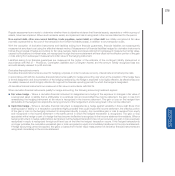 276
276 -
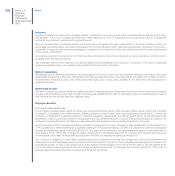 277
277 -
 278
278 -
 279
279 -
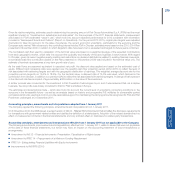 280
280 -
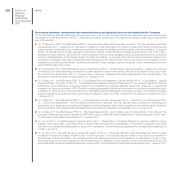 281
281 -
 282
282 -
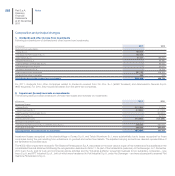 283
283 -
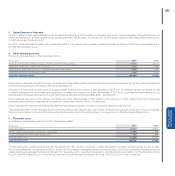 284
284 -
 285
285 -
 286
286 -
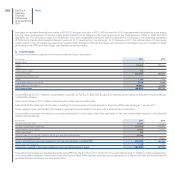 287
287 -
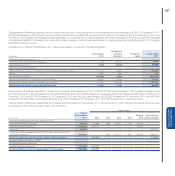 288
288 -
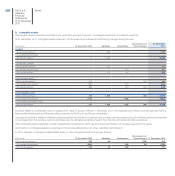 289
289 -
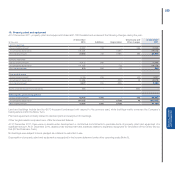 290
290 -
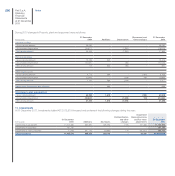 291
291 -
 292
292 -
 293
293 -
 294
294 -
 295
295 -
 296
296 -
 297
297 -
 298
298 -
 299
299 -
 300
300 -
 301
301 -
 302
302 -
 303
303 -
 304
304 -
 305
305 -
 306
306 -
 307
307 -
 308
308 -
 309
309 -
 310
310 -
 311
311 -
 312
312 -
 313
313 -
 314
314 -
 315
315 -
 316
316 -
 317
317 -
 318
318 -
 319
319 -
 320
320 -
 321
321 -
 322
322 -
 323
323 -
 324
324 -
 325
325 -
 326
326 -
 327
327 -
 328
328 -
 329
329 -
 330
330 -
 331
331 -
 332
332 -
 333
333 -
 334
334 -
 335
335 -
 336
336 -
 337
337 -
 338
338 -
 339
339 -
 340
340 -
 341
341 -
 342
342 -
 343
343 -
 344
344 -
 345
345 -
 346
346 -
 347
347 -
 348
348 -
 349
349 -
 350
350 -
 351
351 -
 352
352 -
 353
353 -
 354
354 -
 355
355 -
 356
356 -
 357
357 -
 358
358 -
 359
359 -
 360
360 -
 361
361 -
 362
362 -
 363
363 -
 364
364 -
 365
365 -
 366
366 -
 367
367 -
 368
368 -
 369
369 -
 370
370 -
 371
371 -
 372
372 -
 373
373 -
 374
374 -
 375
375 -
 376
376 -
 377
377 -
 378
378 -
 379
379 -
 380
380 -
 381
381 -
 382
382 -
 383
383 -
 384
384 -
 385
385 -
 386
386 -
 387
387 -
 388
388 -
 389
389 -
 390
390 -
 391
391 -
 392
392 -
 393
393 -
 394
394 -
 395
395 -
 396
396 -
 397
397 -
 398
398 -
 399
399 -
 400
400 -
 401
401 -
 402
402
 |
 |

Fiat S.p.A.
Statutory
Financial
Statements
at 31 December
2011
Notes
280
Accounting standards, amendments and interpretations not yet applicable and not early adopted by the Company
At the date of these financial statements, the European Union had not yet endorsed the following standards and amendments, with
the exception of the Amendment to IFRS 7 – Financial Instruments: Disclosures (7 October 2010), details of which are provided at the
end of this section:
On 12 November 2009, the IASB issued IFRS 9 – Financial Instruments, which was later amended. The new standard, applicable
retrospectively from 1 January 2015, represents completion of the first phase of a project to replace IAS 39 and introduces new
requirements for classification and measurement of financial assets and liabilities and derecognition of financial assets. For financial
assets, the standard uses a single approach to determine whether a financial asset is measured at amortized cost or fair value –
replacing the many different rules in IAS 39 – which is based on how an entity manages its financial instruments and the contractual
cash flow characteristics of the financial assets. For financial liabilities, on the other hand, the principal amendment relates to the
recognition of changes in fair value of financial liabilities measured at fair value through profit or loss, when such changes are due to
changes in the credit risk of the liability. Under the new standard, these changes must be recognized in other comprehensive income
rather than through profit or loss.
On 20 December 2010, the IASB issued a minor amendment to IAS 12 – Income taxes, requiring an entity to measure the deferred
tax relating to an asset depending on whether the entity expects to recover the carrying amount of the asset through use or sale.
As a result of this amendment, SIC 21 – Income Taxes – Recovery of Revalued Non-Depreciable Assets will no longer apply. The
amendment must be adopted retrospectively from 1 January 2012.
On 12 May 2011, the IASB issued IFRS 10 – Consolidated Financial Statements that will replace SIC-12 – Consolidation – Special
Purpose Entities and parts of IAS 27 – Consolidated and Separate Financial Statements (to be renamed Separate Financial
Statements) which addresses accounting treatment for investments in separate financial statements. There are no substantial
changes from the previous version. IFRS 10 builds on existing principles by identifying the concept of control as the determining factor
in whether an entity should be included within the consolidated financial statements of the parent company. The standard provides
additional guidance for situations where control may be difficult to determine. IFRS 10 and IAS 27 are effective retrospectively from
1 January 2013.
On 12 May 2011, the IASB issued IFRS 11 – Joint Arrangements which supersedes IAS 31 – Interests in Joint Ventures and SIC-
13 – Jointly-controlled Entities – Non-monetary Contributions by Venturers. The new standard sets out criteria for identifying joint
arrangements, by focusing on the rights and obligations of the arrangement rather than its legal form, and defines rules for treatment
of joint operations in the separate financial statements. The standard is effective retrospectively from 1 January 2013.
On 12 May 2011, the IASB issued IFRS 13 – Fair Value Measurement, which clarifies rules for determination of fair value for the
purposes of financial reporting and applies to all IFRS that require or allow fair value measurement or disclosures based on fair value.
The standard is applicable prospectively from 1 January 2013.
On 16 June 2011, the IASB issued an amendment to IAS 1 – Presentation of Financial Statements requiring entities to group
together items within other comprehensive income that might subsequently be reclassified to the profit or loss section and those
that will not be reclassified subsequently to the profit or loss section. The amendment is applicable for annual periods beginning on
or after 1 July 2012.
On 16 June 2011, the IASB issued an amended version of IAS 19 – Employee Benefits which eliminates the option to defer
recognition of gains and losses, known as the “corridor approach”, and requires any plan deficit or surplus to be presented in
the statement of financial position, the components of cost relating to service and net interest to be recognized in profit or loss,
and actuarial gains and losses arising from the remeasurement of liabilities to be recognized in other comprehensive income. The
amendment also introduces additional disclosure requirements. The amendment is applicable retrospectively from 1 January 2013.
